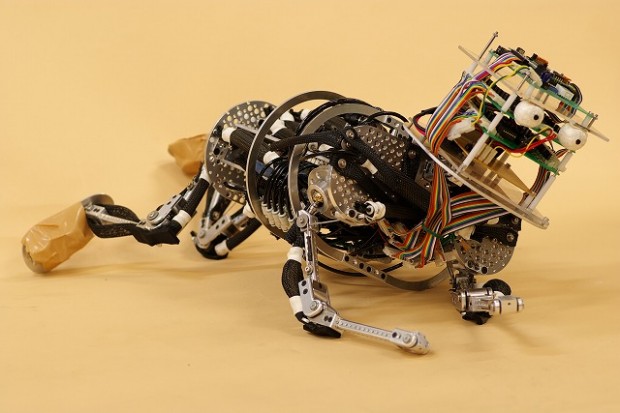
The store downstairs from your apartment specialized in junk. Its owner was a small man, his face sagging and acne scarred, his front shirt pocket bulging with a pack of Marlboros and his hands always, always fiddling. He died a week ago and his shop has been locked since.
At night you hear a baby crying through the floor. A mewling, a squeal, silence for an hour, maybe two. You stare in the near dark at a stain on the ceiling, straining to hear the noise again. There it is. A baby’s cry.
The man downstairs had no relatives. You bought a few things from him, an old Atari 2600 that still worked, a 23-inch LCD monitor. But now his store is shut and the crying is keeping you up. Is it a doll, broken and wailing on its last gasp of battery? You’re going to have to check if you want to keep your sanity.
You know a way in. The back window. It’s always been open. You lift it and a crush of long chain monomers, grease, and dust, the carcinogenic smell of technologies obsolete and obsoleting, wafts out at you. There’s also something acrid, like burned wire and hair. You push yourself over through the window and hear a rustle in the empty, cramped shop. Boxes of gear tower over you and you can’t see more than a few feet without your vision being occluded by a case from an old Magnavox or the guts of a dead radio. Further in. No alarms here. He never believed in them. He said he didn’t need them.
Further in. Suddenly, you hear the cry. It is so realistic, so close that you nearly scream. To your left is a box marked “Pneuborn 7II/13.” The cries are coming from inside. You lift the lid, weak light streaming in from the alley behind the shop. Suddenly, two metal hands reach out and grab your neck. The thing is heavy, about as big as a 13 month old baby. It pushes you down and clinging to its leg is a 7 month old robot, the one that is screaming the loudest. “Feed! Feed!” the bigger one cries. “Feed!”
“Fee,” squeaks the littler one.
You soon discover they run on batteries powered by human blood.
Measuring the size of a 7 month old infant, Pneuborn-7II was built to study the relationship between motor development and embodiment. It is 80cm (31″) tall, weighs 5.4kg (11.9 lbs), and has 26 degrees of freedom actuated by 19 pneumatic muscles. Notably, the robot’s spine has three pitch and yaw joints that allow it to rotate, flex, and extend. It is fully autonomous, containing a micro controller, battery, air valves, and an air source (compressed C02 cartridge bottle). During long experiments, air can be provided through an external compressor.
The researchers implemented a learning algorithm based on central pattern generators with an optimization method, which was able to generate successful crawling forward motions. They were able to accomplish this despite the robot’s lack of sensors or sophisticated artificial intelligence. Central pattern generators (or CPGs for short) are a type of neural network that are often used in robotics to create rhythmic motions that are especially useful for simple locomotion such as crawling or rolling over.